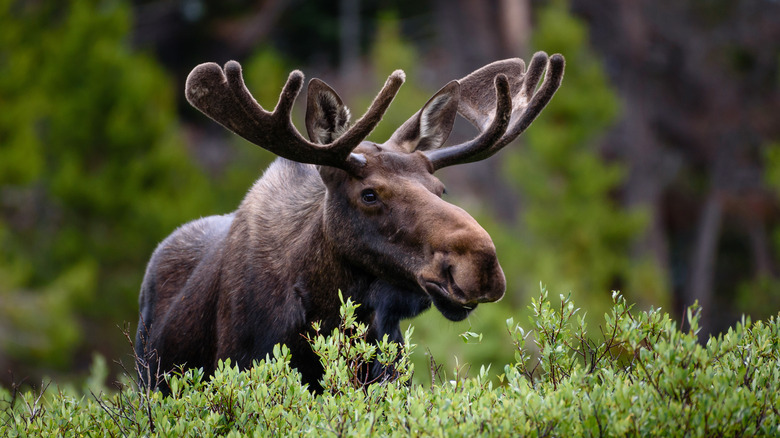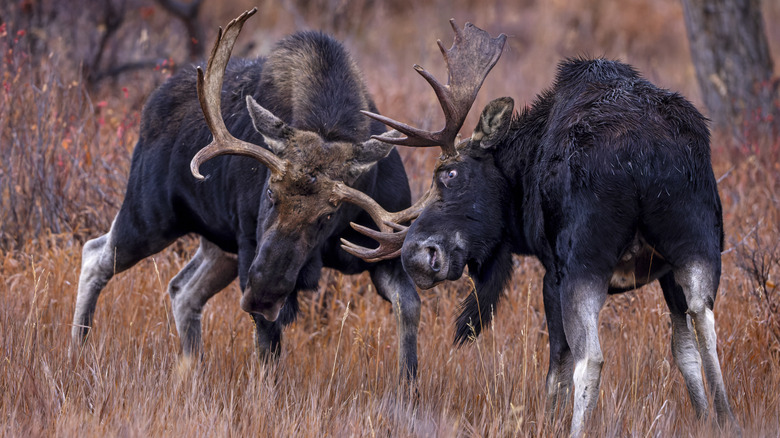The 1 Thing You Should Never Do If You See A Moose
Encountering a moose for the first time can be quite a shock. As the largest deer species in the world, it casts an intimidating figure, with males capable of growing 6 feet tall from head to shoulder and weighing up to 1,600 pounds. While not territorial, the lumbering giant can become aggressive during the rutting season, which lasts from August to mid-October. And like most mothers in the animal kingdom, a moose will protect her young at all costs. In the winter months, a moose may also become aggressive, especially if it struggles with food scarcity. Regardless of the season or situation, one thing you must never do is approach a moose.
Even if it seems docile, several factors can cause it to become aggressive if it feels threatened or stressed. This includes trying to give it food; real-life interactions with wildlife are unlike those in the movies. Moreover, feeding can lead to more aggression. If moose become accustomed to humans as a source of food, they can become frustrated when someone does not provide them with food. This act is also illegal in most states.
Staying away from moose is a practice that can be further extended. Notably, those who love to hike with their dog should consider keeping their pooch leashed in moose country, as the interaction could be deadly for a pet. If you do encounter one, give it space and back up slowly (don't run), talk to let it know you are there, and avoid sudden movements to prevent surprising it. Moose are incredible creatures, but practicing safety and not encroaching on their space is essential to avoiding a confrontation, as the last thing anyone wants is a charging behemoth coming their way.
How to tell if a moose is aggressive and what to do if it attacks
Running into a moose, especially for the first time, can make it hard to interpret anything they do. Yet, there are notable signs of aggression. These signs can include lowering of the head, puffing up of the hair on its neck, flattening its ears back (similar to a cat's ears when showing aggression), or licking of its lips. In all these cases, you have gotten too close to a moose and should try to de-escalate the situation. As you can see in the video below, one man ignored these signs and just stood his ground, which resulted in him being charged by the visibly agitated giant.
If a moose does charge, trying to place a large object between yourself and it is the best bet to avoid getting injured. While they may seem like slow giants when grazing, a moose can pick up into a sprint, running at 35 mph (almost as fast as a greyhound runs). A moose also has great endurance, as they can swim for up to two hours.
Males have to compete with others of equal strength; their antlers are no joke, and their massive size and weight can make their hooves a deadly weapon to be caught under. If you want to witness this remarkable giant, it is best to do so from a safe distance or in a zoo; never approach one looking for a photo opportunity or under the false notion that you will be able to bond with it. The mighty moose deserves respect.

